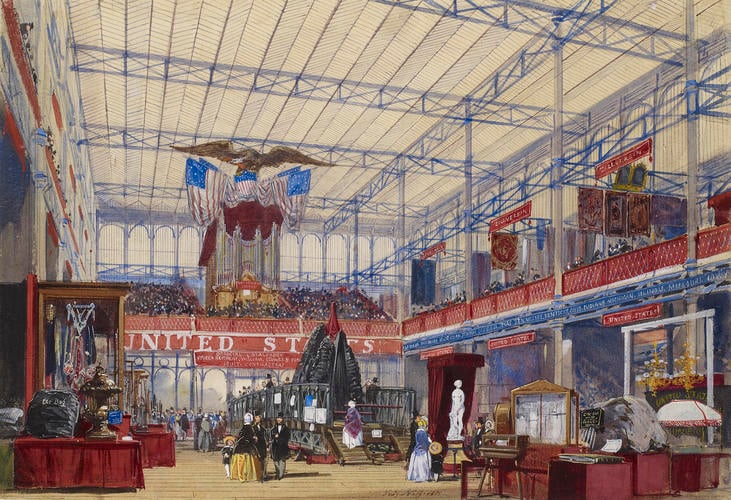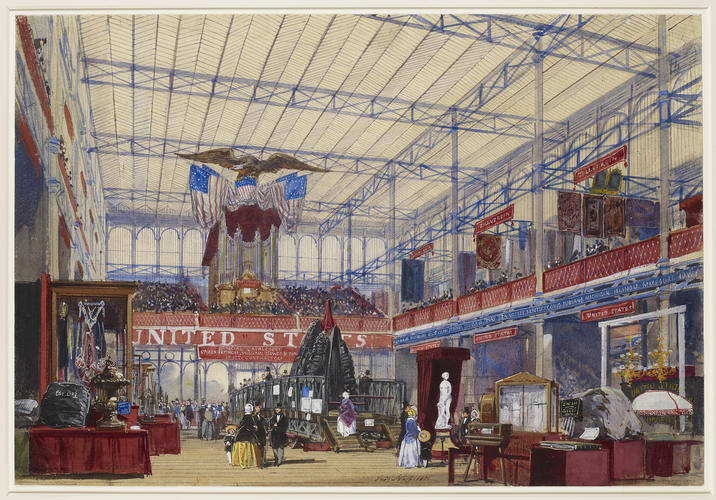The Great Exhibition: America dated 1851
33.4 x 48.5 cm (whole object) | RCIN 919957
-
A watercolour view of the American section at the Great Exhibition; in the centre, a model of Rider's Suspension Truss Bridge, with upon it a 'trophy' of vulcanized india-rubber exhibited by the Goodyear Rubber Company. Signed and dated at bottom centre right: Josh Nash 1851.Half the exhibition space in the Crystal Palace was devoted to British manufacturing, and the other half was offered to foreign countries to display their achievements and specialisms. Nash’s watercolour shows a selection of the American exhibits including Rider’s Suspension Truss Bridge supporting a trophy of vulcanised rubber made by the Goodyear Company, Hiram Power’s statue of a Greek slave, and a pasteboard model of a bald eagle. The American involvement in the Great Exhibition was coordinated by a committee which grew out of the National Institute. Over 600 American exhibitors participated in the Great Exhibition, and those selected assembled their contributions in New York and placed them on the frigate St Lawrence which set sail for Southampton. Notable exhibits included India-rubber goods, firearms, a double grand piano, and numerous dental appliances. Of the 170 medals awarded by the Council of the Great Exhibition, five were awarded to American exhibits.
In his capacity as President of the Society of Arts, Prince Albert set up a committee to organise exhibitions with the aim of improving British industrial design. An exhibition in Birmingham in 1849 was followed by the first truly international exhibition, the Great Exhibition of Products of Industry of All Nations, held in Joseph Paxton's 'Crystal Palace' in Hyde Park, London, in the summer of 1851. Six million people visited the exhibition to see over 100,000 exhibits from around the world, divided broadly into raw materials, machinery, manufactures and the fine arts; Queen Victoria herself visited no fewer than thirty-four times. The substantial profits were used to establish the South Kensington Museum, renamed the Victoria and Albert Museum in 1899.
This is one of a series of forty-nine watercolours commissioned by Queen Victoria and Prince Albert illustrating the various national sections and displays of materials and objects at the Exhibition. Joseph Nash made forty-three of them, and Louis Haghe painted six. The watercolours were commissioned for the purpose of reproduction as chromolithographs, and thus were a permanent visual record of the temporary spectacle. These chromolithographs were published by Messrs Dickinson of Bond Street in two volumes with accompanying letterpress descriptions in 1854 as Dickinson's Comprehensive Pictures of the Great Exhibition of 1851.Provenance
Commissioned by Queen Victoria and Prince Albert
-
Medium and techniques
Measurements
33.4 x 48.5 cm (whole object)
Other number(s)
RL 19957









